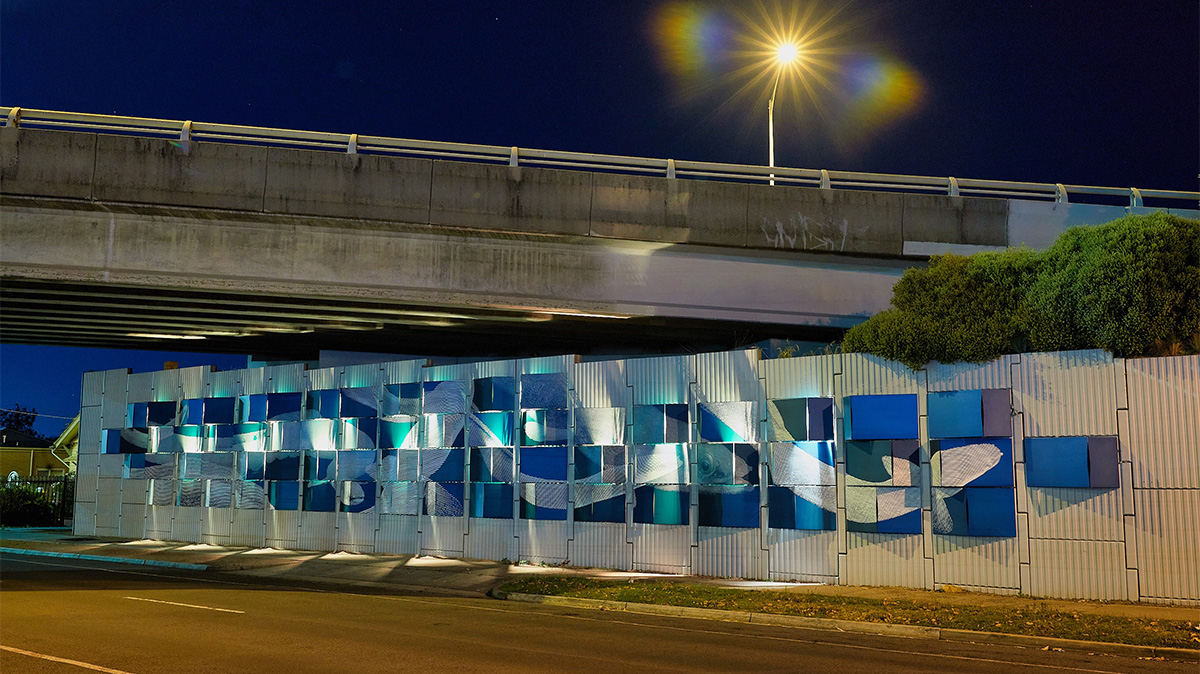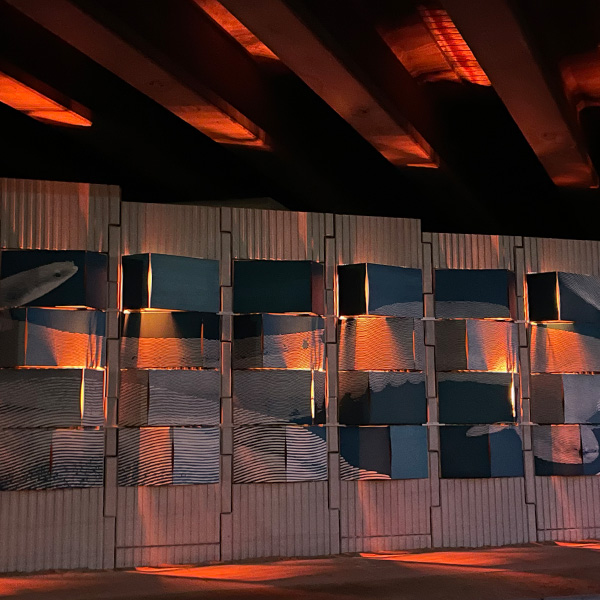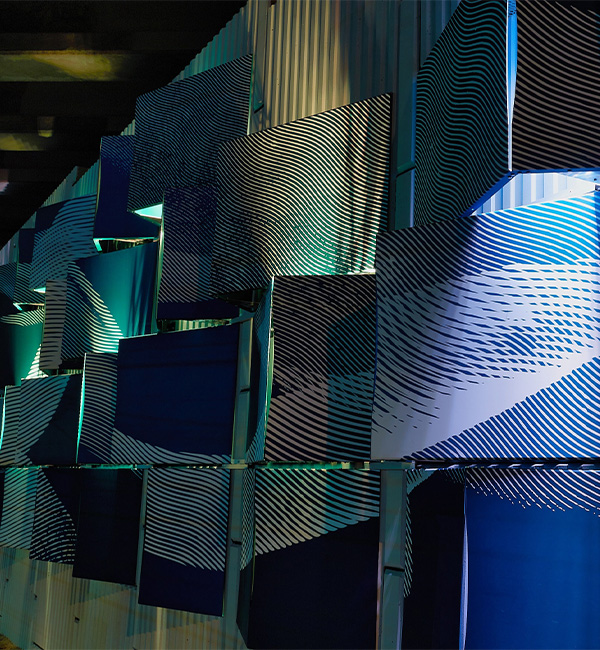Scale
Urban road bridges are rarely conceived with aesthetics in mind, much less art. They are engineered to do a simple job. Strength, function, longevity, and cost are the drivers of the design. And so it is with the bridge at Fletcher Road in Frankston Victoria. Passing under the bridge is an almost unnoticeable experience, just a place to be passed on the way to somewhere else.
No Longer.
Artist: @phin_murphy
Graphic Art: @andrewhoggdesign
Installation: @skyview_design_build

Photo by: Jacob Manfred
The East and West abutment walls of the Fletcher Road bridge are now adorned by a new public artwork. Part sculpture and part imagery, the new visual experience compliments the existing pre-cast concrete panels to generate a modular relief configuration of ‘Scale’ across the abutment walls.
Themes of activity and movement are brought to life through the scales’ angled positions from the wall face creating a dynamic visual rhythm for passing commuters, pedestrians and cyclists. This dynamic is enhanced through material, colour, imagery, and back-lit illumination.
The artwork known as ‘Scale’, has been developed by local landscape architect and artist Phin Murphy, the winner of the competition for the design for this project under the auspices of Frankston City and the Frankston Suburban Revitalisation Board, funded by the Victorian Government.
Murphy’s design has become a transformative artwork that respects the Fletcher Road Overpass as an important gateway to Frankston.

Photo by: Phin Murphy
‘Scale’ melds the themes of water, movement and marine heritage via the narrative of the epic migration of the Australian short-finned eel. These remarkable fish spend years of existence in inland waterways, such as the nearby Kananook Creek in Frankston. These remarkable creatures leave the inland waterways for an epic 3000-kilometre return migration to the Coral Sea and back, one year later. ‘Scale’ is a physical echo of water and, in part, the very scales of the Eels which inspired the creation.
Photo by: Jacob Manfred
The depth in the relief of the undulating panels created the opportunity for indirect view backlighting.
The off set in the undulation of the scales created sufficient room for the installation of a compact high powered LED lighting system that could direct light both upwards and downwards onto the panels above and below whilst allowing light to graze the surface of the abutment below the artwork as well as deliberately spilling light onto the under croft of the bridge above.

Photo by: Jacob Manfred
Given the required shape of the beam of light, and the space available behind the scales, a short linear light fixture would be ideal. A 4-in-1 RGBW LED mounted in a custom IP Linear Wash Quattro AC, 300mm long was tested and chosen. There was only space enough for 6 RGBW Leds, but when combined with a 10 X 60-degree asymmetric lens, the desired coverage was achieved. The 4-in-1 LED is the ideal choice as the short-range colour mixing is excellent.
The abutments are not a mirror of each other and the number of scales and therefore light fixtures are not the same. The east elevation would have 15 light fixtures and the west façade 9 fixtures.
Following successful mock-ups in Melbourne, illumination Physics designed the lighting installation completely, including the layout, the bracketry, and all the special cables – all made to pre-determined lengths so that no wiring was required on site. All starter and interlinking cables are fitted with moulded-on, push to snap connectors. Every component was labelled in the factory and marked on the construction drawings, to make the installation as simple as possible. The DMX addresses were pre-set in the factory to alleviate the cost and inconvenience of doing this on-site.
The ‘Scale’ public artwork has transformed a forgettable structure into a memorable location. Meticulously planned and executed this visually delightful and durable installation will brighten the journey of millions over time.


